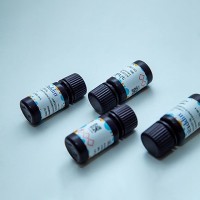Rodent Models of Helicobacter Infection, Inflammation, and Disease
互联网
506
Animal models are essential for in vivo analysis of Helicobacter-related diseases. Transgenic mice and Mongolian gerbil models have been the corner stone of present research focusing on both bacterial virulence factors and host response to infection. Establishing a reproducible rodent model of persistent Helicobacter pylori infection that resembles the H. pylori -associated gastritis observed in humans was a considerable challenge until Lee et al. (Gastroenterology 112:1386–1397, 1997) successfully adapted a clinical Cag A- and Vac A-expressing strain for the mouse stomach. This so-called SS1 (Sydney) strain has since been extensively used for H. pylori research; other rodent-adapted Helicobacter strains have subsequently been developed and utilized in wild-type and genetically engineered rodent models. These bacteria include both H. pylori and the larger but related species H. felis (originally isolated from cats). In this chapter we focus mainly on these two Helicobacter strains and review the rodent models that have been employed to investigate how Helicobacter species induce gastric inflammation and disease.








